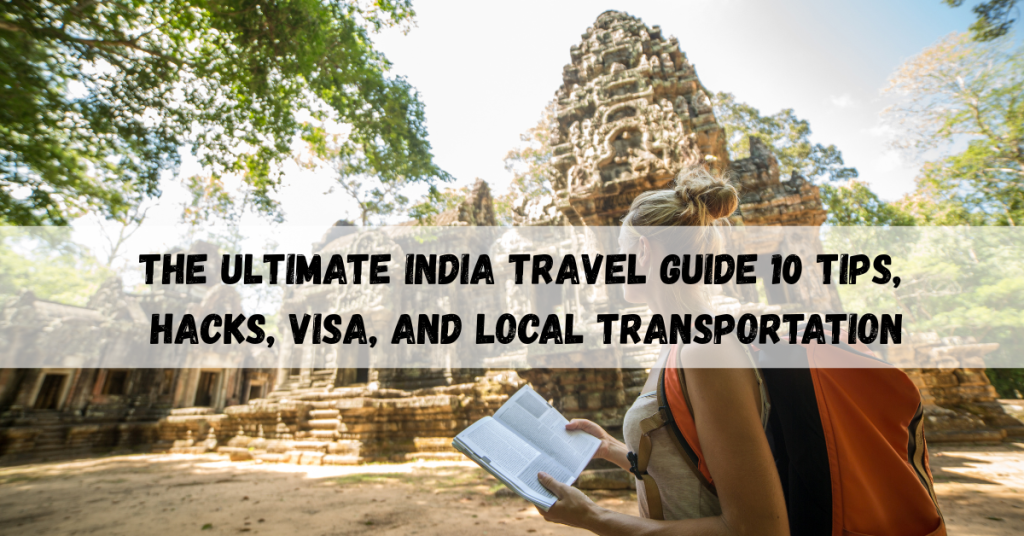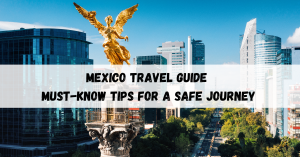India is an incredible country filled with diverse landscapes, ancient monuments, bustling cities, and rich traditions. However, traveling through India can be overwhelming for first-time visitors. From understanding cultural norms to navigating public transport, planning ahead can save you time and money.
In this comprehensive guide, we’ll cover essential travel tips, smart hacks, visa requirements, and transportation options so you can explore India with ease. Whether you’re a budget backpacker, a solo traveler, or visiting for a short holiday, this guide has you covered.
Essential Travel Tips for India
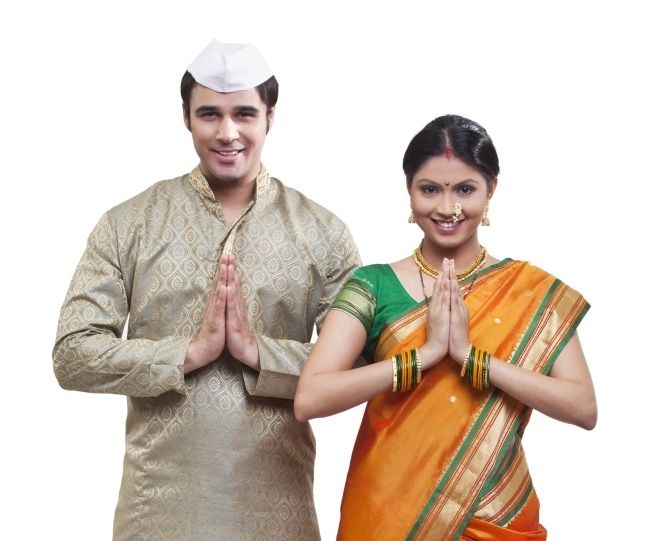
Understanding Indian Culture & Etiquette
India is a land of deep-rooted traditions, and showing respect for its customs can enhance your experience. Here are some key etiquette rules to keep in mind
- Dress Conservatively: Especially in religious sites and rural areas.
- Remove Shoes: Before entering temples and homes.
- Use the Right Hand: When giving or receiving anything, as the left hand is considered unclean.
- Respect Local Traditions: Some temples may have entry restrictions for non-Hindus.
Best Time to Visit India
India has diverse climatic conditions, so choosing the right season depends on where you plan to visit:
| Season | Weather | Best Regions to Visit |
|---|---|---|
| Winter (Nov–Feb) | Cool & Pleasant | Rajasthan, Kerala, Goa |
| Summer (Mar–Jun) | Hot & Dry | Himachal Pradesh, Uttarakhand (hill stations) |
| Monsoon (Jul–Oct) | Rainy & Humid | Kerala, Meghalaya, Western Ghats |
Safety & Health Tips for Travelers
- Drink only bottled or filtered water to prevent illness.
- Use mosquito repellent, especially in humid areas.
- Be mindful of pickpockets in crowded places.
- Avoid raw street food unless it’s freshly prepared and cooked.
India Travel Hacks: Save Money & Travel Smart
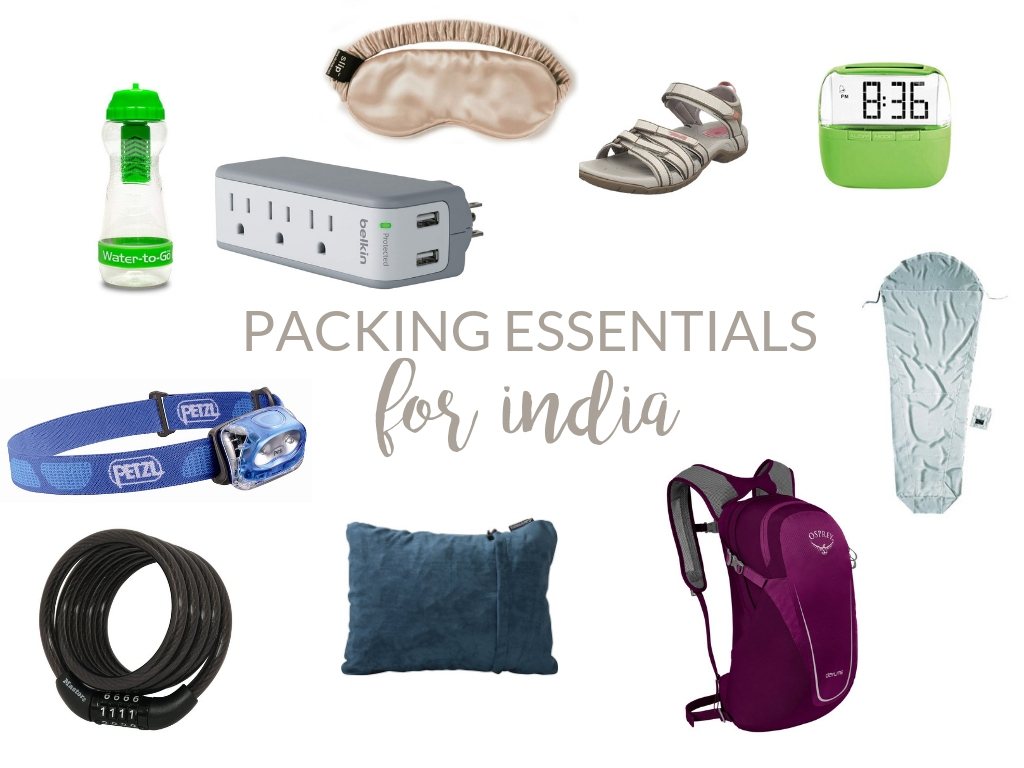
Packing Essentials for India
- Clothing: Light, breathable fabrics; modest outfits for temples.
- Footwear: Comfortable shoes for sightseeing; slip-ons for temples.
- Power Adapter: India uses Type D & M plugs (220V).
- Health & Hygiene: Mosquito repellent, hand sanitizer, sunscreen.
- Navigation: Download Google Maps (offline mode) for weak signal areas.
- Extras: A reusable filtered water bottle, scarf/shawl, and power bank.
Money-Saving Travel Hacks
- Book Train Tickets Early: Use IRCTC to secure affordable fares.
- Use Public Transport: Metro, local buses, and shared autos are cheaper than taxis.
- Eat Local: Dhabas & busy street stalls offer affordable, fresh food.
- Bargain Smart: Negotiate in markets; start at 50% of the asking price.
- Budget Stays: Opt for hostels, homestays, or night trains to cut costs.
Estimated Daily Travel Costs in India
Planning your India travel budget? Here’s a detailed breakdown of daily expenses in India based on different travel styles
| Expense Type | Budget Traveler ($10–$25/day) | Mid-Range Traveler ($30–$60/day) | Luxury Traveler ($80+ /day) |
|---|---|---|---|
| Accommodation | $5–$15 (Hostels, budget hotels) | $25–$50 (3-star hotels, homestays) | $80+ (Luxury hotels, resorts) |
| Food | $2–$5 (Street food, dhabas) | $8–$20 (Casual restaurants) | $30+ (Fine dining) |
| Transport | $1–$5 (Buses, metro, rickshaws) | $10–$25 (Uber, private taxis) | $50+ (Car rentals, first-class trains) |
| Sightseeing | Free–$5 (Temples, local attractions) | $10–$30 (Museums, monuments) | $50+ (Guided tours, premium experiences) |
| Total Daily Budget | $10–$25 | $30–$60 | $80+ |
Avoiding Scams in India
- Fake Guides: Book official guides via tourism offices or trusted websites.
- Overcharging Rickshaws & Taxis: Always insist on meters or use Ola/Uber.
- “Closed Attraction” Scam: Verify status via Google Maps before believing touts.
- Shop Scams: Avoid “special government shops” with inflated prices.
- Currency & ATM Safety: Withdraw from bank ATMs; carry small cash for change
Visa & Documents Required for Traveling to India
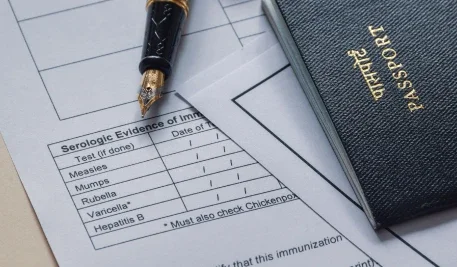
Types of Indian Visas
India requires a visa for most travelers. Here are the common types:
| Visa Type | Purpose | Validity |
|---|---|---|
| Tourist Visa | Leisure travel | 30 days – 10 years |
| Business Visa | Work-related travel | Up to 5 years |
| Student Visa | Studying in India | Duration of course |
| e-Visa | Online application | 30 days – 1 year |
How to Apply for an Indian e-Visa
- Visit the official e-Visa website.
- Fill out the online application form.
- Upload necessary documents (passport copy, photo).
- Pay the visa fee and submit the application.
- Receive your approved e-Visa via email.
Important Documents for Travel
- Valid passport with at least 6 months validity.
- Printout of e-Visa (if applicable).
- Travel insurance covering medical emergencies.
- COVID-19 vaccination proof (if required by regulations).
Local Transportation in India: How to Get Around
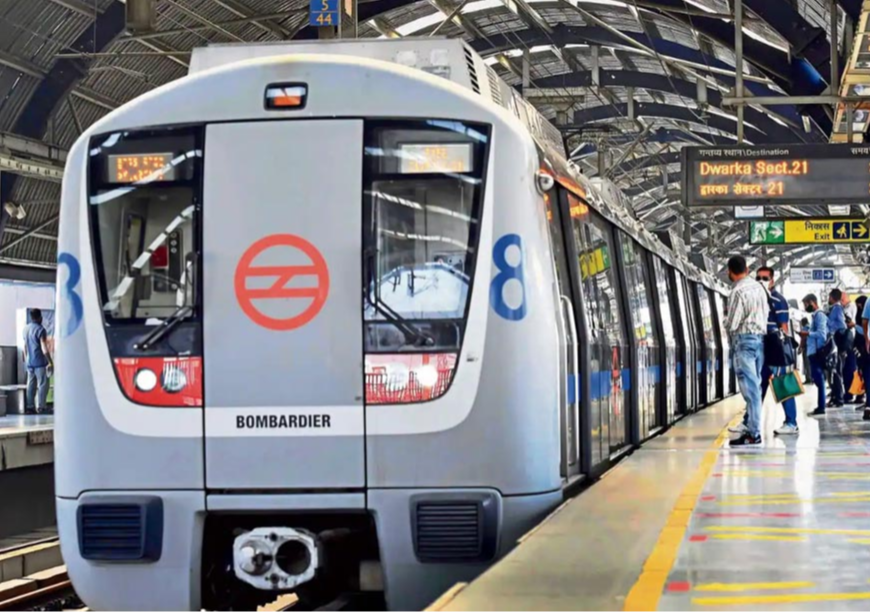
Public Transport in India
India has a vast but sometimes chaotic public transportation network. Here’s a breakdown of the best options:
Indian Railways, Best for Long Distances
- Book tickets early via IRCTC (Indian Railways website) to secure availability, especially for popular routes.
- Choose AC coaches (AC 2-tier or AC 3-tier) for a more comfortable journey, or opt for sleeper class for budget travel.
- Use overnight trains to save on hotel costs while covering large distances between cities efficiently.
Metro Rail, Best for City Travel
- India’s metro systems are affordable, fast, and reliable, making them ideal for navigating major cities.
- Purchase smart cards for multiple rides, avoiding long ticket queues and saving money.
| City | Metro Service | Smart Card Available? |
|---|---|---|
| Delhi | Delhi Metro | Yes |
| Mumbai | Mumbai Metro | Yes |
| Bengaluru | Namma Metro | Yes |
| Kolkata | Kolkata Metro | Yes |
Auto-Rickshaws & Taxis, Best for Short Distances
- Use Uber or Ola for transparent pricing and safer rides instead of negotiating fares with local drivers.
- For local rickshaws, always agree on a price before starting the ride to avoid being overcharged.
Renting Scooters & Bikes
- Bike rentals are popular in tourist destinations like Goa, Manali, and Jaipur, offering flexibility to explore freely.
- An International Driving Permit (IDP) is required for foreigners, and wearing a helmet is mandatory for safety and legal compliance.
India is a land of adventure, history, and cultural diversity. By planning ahead and following these travel tips, you can make your journey stress-free and enjoyable. From securing the right visa to choosing the best transport options, every small preparation will enhance your experience.
FAQs
Can I get a visa on arrival in India?
No, India does not offer visas on arrival. Travelers must apply for an e-Visa or regular visa before arrival.
Is India safe for solo travelers?
Yes, but take precautions like avoiding isolated areas at night and using trusted transport services.
How do I book train tickets in India?
Book through travel apps like Cleartrip and MakeMyTrip.
What’s the cheapest way to travel in India?
Trains and government-run buses are the most budget-friendly options.
Can I use credit cards in India?
Yes, in cities, but carry cash in rural areas where digital payments may not be accepted.
How do I avoid getting sick while traveling in India?
Drink bottled water, eat freshly cooked food, and avoid raw vegetables from street vendors.
